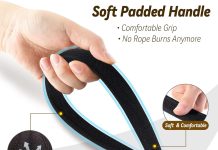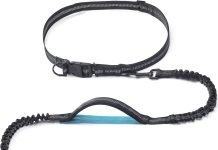When it comes to choosing the right equipment for our furry friends, there’s always a lot to consider. In the world of walking and training tools, the debate between using a harness or a collar is a common one. Each option has its own set of advantages and disadvantages, and it’s important to understand them before making a decision. Let’s take a closer look at the pros and cons of using a harness versus a collar for our beloved pets.
Advantages of Using a Harness
Better control and less strain
Using a harness provides better control over our dogs while walking them. The design of a harness distributes the force across the dog’s body, reducing the strain on their neck and preventing potential injuries. This is particularly important for dogs that tend to pull on the leash, as it helps to redirect their pulling force towards their chest, giving us more control and making the walking experience more enjoyable.
Prevents injuries
One of the major advantages of using a harness is the prevention of injuries. When a dog pulls on the leash while wearing a collar, it can put significant pressure on their neck and windpipe, potentially causing injuries to the delicate structures in that area. With a harness, the pressure is distributed more evenly across the body, significantly reducing the risk of neck injuries.
More comfortable for dogs
Harnesses are generally more comfortable for dogs, especially for those breeds that have a predisposition to respiratory issues or have a short snout. By avoiding constant pressure on the neck, a harness allows for better airflow and breathing, ensuring our furry friends can walk or run without any discomfort.
Reduces pulling behavior
For dogs that have a tendency to pull on the leash, using a harness can be an effective way to reduce this behavior. By redirecting the force towards the chest, a harness gives us better control and discourages pulling. This can be particularly helpful in preventing our dogs from dragging us on walks and makes the experience safer and more enjoyable for both parties.
Ideal for certain breeds and sizes
Different dog breeds have different body structures and sizes, and a harness can be more suitable for certain breeds. For example, smaller dogs with delicate necks may benefit from wearing a harness instead of a collar, as it prevents unnecessary strain on their necks. Additionally, breeds with short snouts, such as bulldogs or pugs, often have difficulty wearing collars due to their respiratory issues, making a harness a better option for them as well.
Disadvantages of Using a Harness
Learning curve for dog owners
One disadvantage of using a harness is the learning curve for dog owners. Harnesses may come with different types of buckles and straps, making it a bit confusing for first-time users. It may take some time to properly fit and adjust the harness on our dogs, and understanding the different attachment options may require a bit of practice. However, with some patience and guidance, most dog owners will quickly get the hang of using a harness effectively.
Potential for escaping
Another disadvantage of using a harness is the possibility of our dogs escaping from it. Certain dog breeds or particularly Houdini-like dogs may find a way to wiggle out of a poorly fitted or unsecured harness. It is crucial to ensure that the harness is properly adjusted and securely fastened to prevent any chances of escape. Additionally, regularly checking the harness for any signs of wear and tear can help avoid unexpected breakage and keep our dogs safely secured.
Possibility of tangling
While using a harness, there is a slight possibility of our dogs getting tangled in the leash or the harness itself. This can be more common for dogs who tend to move around a lot or have a more energetic nature. However, with some leash management and keeping a close eye on our dogs’ movements, we can minimize the risk of entanglement and ensure their safety during walks.
Not suitable for all dogs
While a harness can be beneficial for many dogs, it may not be suitable for every dog. Some dogs may find the feeling of wearing a harness uncomfortable or restrictive, which can cause distress and anxiety. Additionally, certain dogs with specific medical conditions or physical limitations may require alternative options that cater to their unique needs. It is essential to consider our dog’s individual circumstances and consult with a veterinarian if unsure about the suitability of using a harness.
Restricts natural movement
Using a harness restricts certain natural movements of our dogs, particularly in the shoulder area. While a properly fitted harness should not impede normal movement significantly, some dogs may still find it restrictive compared to wearing just a collar. For dogs involved in activities requiring a wide range of motion, such as fieldwork or agility training, a harness may not be the most suitable option.
Benefits of Using a Collar
Familiarity for dogs
Collars are often the most familiar option for dogs, as they have been used for many years. Most dogs are introduced to collars at a young age, making them accustomed to the sensation of having something around their necks. This familiarity can make it easier to put on and adjust a collar when compared to a harness.
Easier to put on and adjust
Collars are generally easier to put on and adjust compared to harnesses. With a wide variety of buckle or clip options, we can quickly fasten and adjust the collar to fit our dog comfortably. This convenience can be especially beneficial for dogs that may become anxious or impatient during the dressing process.
Affordability
Collars are often more affordable compared to harnesses. With a wide range of options available, from basic nylon collars to more durable leather ones, there are choices to suit different budgets. This affordability makes collars accessible to a broader range of dog owners.
Simplicity in design
Collars have a simple design, consisting of a band that goes around the neck and a buckle or clip for fastening. This simplicity makes collars straightforward and easy to use, without any complicated buckles or straps. The uncomplicated design also means that collars are generally lighter in weight compared to harnesses.
Lightweight and less restrictive
Collars are typically lighter in weight compared to harnesses, which can be more comfortable for some dogs. They also allow for more natural movement since there are no additional straps or attachments to restrict the dog’s range of motion. For dogs who do not require the extra support or control provided by a harness, a collar can be a lightweight and less restrictive option.
Drawbacks of Using a Collar
Risk of neck injuries
Using a collar poses a higher risk of neck injuries compared to using a harness. When a dog pulls or lunges on the leash, the pressure is concentrated on their neck, potentially causing harm to the delicate structures in that area. This is particularly concerning for dogs with preexisting neck or spinal conditions, as well as breeds with shorter muzzles or respiratory issues.
Increased pressure on the trachea
Collars can put increased pressure on the trachea, especially if the dog tends to pull on the leash. This pressure can lead to discomfort and difficulty breathing, particularly in breeds with elongated or delicate tracheas. It is important to ensure that the collar is properly fitted to minimize the risk of tracheal damage.
Promotes pulling behavior
Unlike a harness that redirects the pulling force towards the chest, a collar can actually promote pulling behavior. When a dog pulls on the leash while wearing a collar, they experience a choking sensation, which can lead to a reflexive pulling response. This creates a cycle of pulling and choking, making it challenging to train our dogs to walk calmly on a leash.
Limited control, especially for strong dogs
Using a collar can provide limited control, especially for strong and determined dogs. The pressure on the neck caused by the collar may not be sufficient to discourage pulling or keep the dog from lunging towards distractions. For dog owners who struggle with controlling their dogs’ behavior, a collar may not be the most effective choice.
Potential for choking or suffocation
One of the most significant drawbacks of using a collar is the potential for choking or suffocation. If the collar becomes snagged or caught on an object, there is a risk of the dog panicking, resulting in strangulation. This danger emphasizes the importance of proper supervision and ensuring that our dogs’ collars are securely fitted and safely designed.
Comparison between Harness and Collar
Control and restraint
When comparing a harness and a collar, a harness provides better control and restraint, particularly for dogs that tend to pull. The chest attachment point of a harness allows for redirecting the pulling force towards the chest, giving us more control over our dogs’ movements. On the other hand, a collar offers limited control, especially for strong and determined dogs.
Safety and injury prevention
In terms of safety and injury prevention, a harness is generally the superior option. The even distribution of force across the body reduces the risk of neck injuries and tracheal damage that can occur with a collar. A properly fitted harness also provides additional support for dogs with certain medical conditions, making it a safer choice in those situations.
Comfort level for dogs
When it comes to comfort, both options have their strengths. A harness is generally more comfortable for dogs, as it avoids constant pressure on the neck and allows for better airflow and breathing. However, some dogs may find wearing a harness restrictive or uncomfortable in the shoulder area. For dogs accustomed to collars, they may find collars more comfortable due to their familiarity.
Behavioral impact
In terms of behavioral impact, a harness can help reduce pulling behavior by redirecting the force towards the chest. This redirection makes it easier to train our dogs to walk calmly on a leash. On the other hand, a collar can promote pulling behavior due to the choking sensation experienced when a dog pulls on the leash.
Suitability for different breeds and sizes
Both harnesses and collars come in various sizes, making them suitable for different breeds and sizes of dogs. However, harnesses are often a better option for smaller or delicate breeds that may experience neck strain or respiratory issues. Collars may be more suitable for larger or more robust breeds that do not require the extra support and control provided by a harness.
Factors to Consider When Choosing
Dog’s size and breed
The size and breed of our dogs play a significant role in determining whether a harness or a collar is the better choice. Smaller or delicate breeds may benefit from a harness to avoid unnecessary strain on their necks, while larger or more robust breeds may be better suited for a collar.
Training and behavior
Considering our dogs’ training and behavior is crucial when choosing between a harness and a collar. If our dogs tend to pull on the leash, a harness can be a valuable tool in training them to walk calmly. However, if our dogs are well-behaved and have already mastered leash manners, a collar may be a suitable option for maintaining control during walks.
Leash attachment options
Both harnesses and collars come with various leash attachment options. Front-clip harnesses are effective in redirecting pulling behavior, while back-clip harnesses provide more freedom of movement. Collars typically have a single attachment point at the back. Considering our dogs’ specific needs and our walking style can help determine the most appropriate leash attachment option.
Health and medical conditions
Certain health and medical conditions may influence our choice between a harness and a collar. Dogs with respiratory issues, neck injuries, or tracheal collapse may require the added support and reduced pressure provided by a harness. On the other hand, dogs with skin sensitivities or allergies may benefit from collars that do not rub against their fur.
Activity level and environment
Considering our dogs’ activity level and environment is essential in choosing between a harness and a collar. For dogs involved in more intense activities like hiking or running, a harness may provide better stability and control. Collars may be more suitable for well-behaved dogs in less demanding environments, such as in the home or neighborhood walks.
Choosing the Right Harness
Types of harnesses available
There are various types of harnesses available to suit different needs and preferences. Front-clip harnesses have a leash attachment point on the chest, while back-clip harnesses have a leash attachment point on the back. There are also step-in harnesses, dual-clip harnesses, and no-pull harnesses. Understanding the different types and their specific features can help us choose the right harness for our dogs.
Proper fit and adjustment
Ensuring a proper fit and adjustment is crucial when choosing a harness. A well-fitted harness should be snug but not too tight, allowing for comfortable movement and breathing. It is important to measure our dogs’ girth and adjust the harness according to the manufacturer’s guidelines. Regularly checking the fit and making any necessary adjustments as our dogs grow or change shape is also essential.
Durability and quality
Choosing a harness made of durable and high-quality materials is important for long-term use and reliability. The harness should be able to withstand regular pulling and movement without fraying or breaking. Checking for features such as reinforced stitching, sturdy buckles, and strong clasps can give us confidence in the durability of the harness.
Customer reviews and recommendations
Before purchasing a harness, it can be helpful to read customer reviews and recommendations. Learning from the experiences of other dog owners can provide insights into the pros and cons of different brands and styles of harnesses. It is important to consider a range of reviews to get a comprehensive understanding of the harness’s performance and suitability for different dogs.
Consideration of dog’s needs
Ultimately, choosing the right harness involves considering our dog’s specific needs and preferences. This includes taking into account their size, breed, temperament, and any specific health considerations. It is important to choose a harness that accommodates our dog’s individual requirements and ensures their comfort and safety during walks.
Choosing the Right Collar
Different types of collars
There are several types of collars available to cater to different needs. Some common types include flat collars, martingale collars, choke chains, prong collars, and buckle collars. Each type has its own features and intended uses. It is crucial to research and understand the advantages and disadvantages of each collar type to choose the most appropriate one for our dogs.
Proper sizing and fit
Choosing the right collar size and ensuring a proper fit is essential for our dog’s comfort and safety. A collar should be snug but not too tight, allowing us to fit two fingers comfortably between the collar and our dog’s neck. Measuring our dog’s neck circumference and referring to sizing charts provided by manufacturers can help us select the appropriate collar size.
Material and construction
Collars are made from a variety of materials, including nylon, leather, and fabric. Each material has its own advantages in terms of durability, comfort, and ease of cleaning. Considering our dogs’ activities, preferences, and potential allergies can help us determine the most suitable collar material. Additionally, checking the construction quality, such as reinforced stitching and sturdy hardware, is important for ensuring the collar’s durability.
Training compatibility
Some collar types, such as martingale or prong collars, may be more suitable for training purposes. These collars provide additional control and can be effective tools when used correctly and under the guidance of a professional trainer. However, it is crucial to approach training with positive reinforcement and always prioritize our dog’s well-being and comfort.
Considering dog’s temperament
Understanding our dog’s temperament is important in choosing the right collar. Some dogs may react negatively to certain types of collars, such as choke chains or prong collars. In such cases, a simpler flat collar or a more gentle training tool may be more appropriate. Taking into consideration our dogs’ personality and sensitivities can help us make a collar choice that promotes their overall well-being.
When to Use a Harness
Walking and leash training
Using a harness during walks and leash training sessions can be beneficial for both us and our dogs. The increased control and reduced strain on the neck make for a more enjoyable and comfortable walking experience. Harnesses can also help redirect pulling behavior, making it easier to train our dogs to walk politely on a leash.
Handling dogs with medical conditions
Harnesses are particularly useful for dogs with medical conditions that affect their neck or respiratory system. Conditions like tracheal collapse, neck injuries, or respiratory issues can be aggravated by the use of a collar. A harness can provide better support and reduce the risk of further complications, making it a safer choice for dogs with these conditions.
Control and management of strong or reactive dogs
For dogs who are strong pullers or display reactive behavior, using a harness can provide better control and management. The chest attachment point on a harness helps redirect the pulling force, making it easier to handle a strong dog. Additionally, the added control can be beneficial when dealing with reactive dogs, allowing us to guide and manage their behavior effectively.
Specific activities like hiking or running
Harnesses are a popular choice for specific activities like hiking, running, or engaging in other intense physical exercises. The extra stability and support provided by a harness allow for better control and reduce the risk of injury during these activities. The harness also ensures that our dogs remain comfortable and safe even during more demanding adventures.
Training dogs to pull sleds or carts
For dogs involved in activities like sledding or cart-pulling, harnesses are essential. The design of a harness allows for even distribution of the pulling force, reducing strain on the dog’s body. Harnesses designed specifically for pulling activities, such as sled dog harnesses or weight-pulling harnesses, provide additional support and ensure the safety of our working dogs.
Conclusion
Choosing between a harness and a collar for our dogs is a personal decision that should consider the pros and cons of both options. Harnesses provide better control, prevent injuries, and are more comfortable for dogs, especially certain breeds and sizes. However, they have a learning curve for dog owners, a potential for escaping, and restrict natural movement. On the other hand, collars offer familiarity, convenience, affordability, and simplicity, but they also have a risk of neck injuries, promote pulling behavior, and provide limited control.
Factors to consider when making this decision include the dog’s size, breed, training, health conditions, and activity level. It’s important to choose a properly fitted harness or collar that meets our individual dog’s needs. Consulting with a veterinarian or professional trainer can provide valuable guidance based on our dog’s specific circumstances. In some cases, a combination of a harness and collar may be appropriate, especially for different activities or training situations. Regular re-evaluation is essential to ensure that our chosen equipment continues to meet our dogs’ changing needs. By carefully considering the advantages and disadvantages and making an informed decision, we can ensure the comfort, safety, and overall well-being of our beloved furry friends.
























![SportDOG Dog Training Collars [New X-Series] Dog Training Collars](https://supredog.com/wp-content/uploads/2019/03/Dog-Training-Collars-100x70.jpg)















